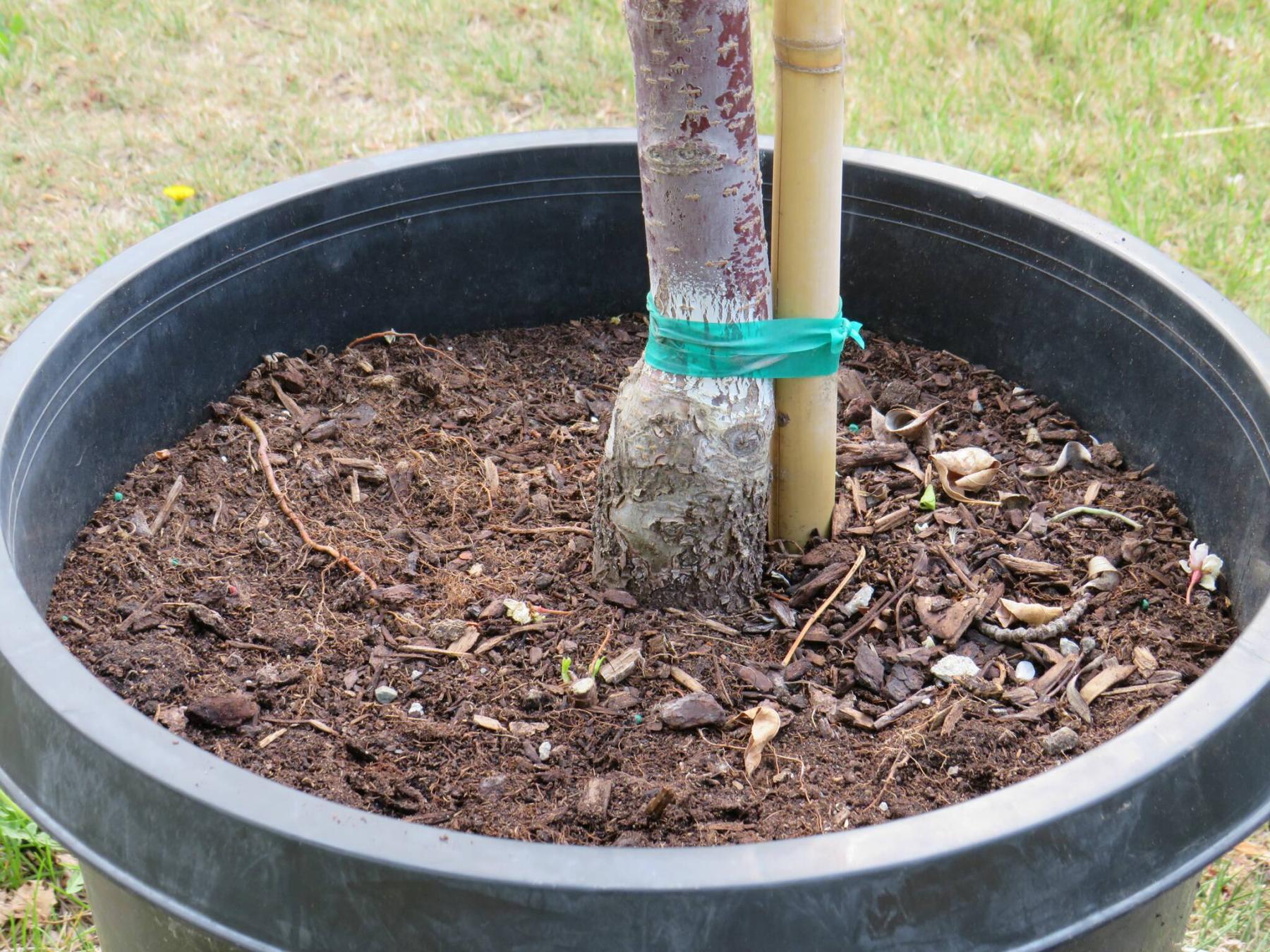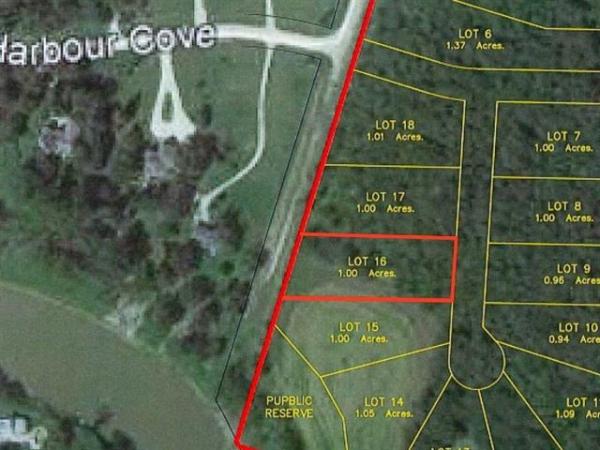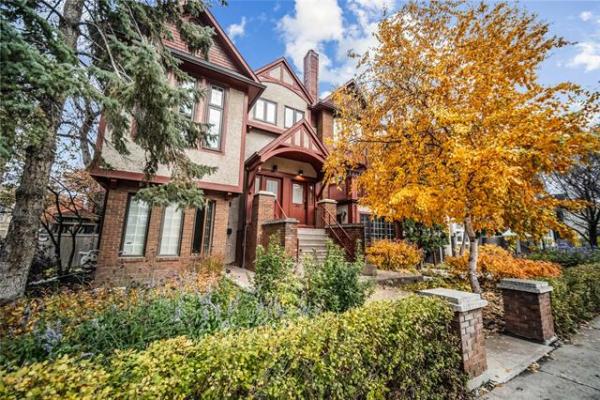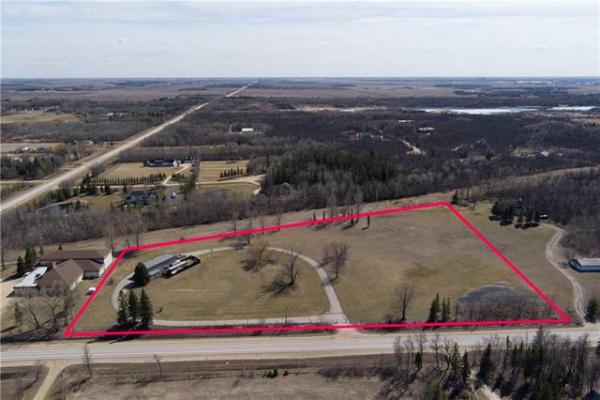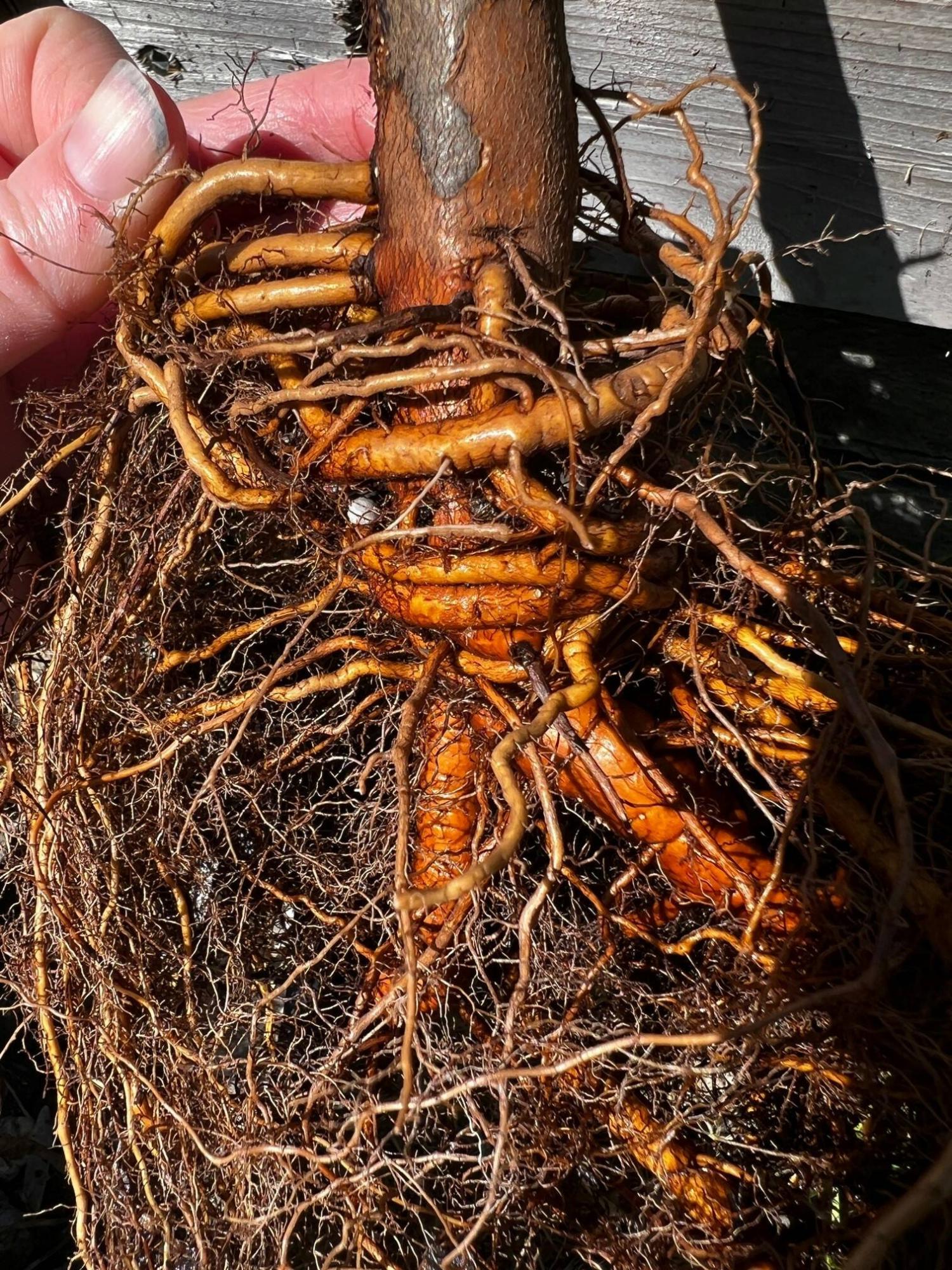
CARLA ANTONATION
Yikes. This is what circling roots look like beneath the soil surface on a five-gallon containerized tree. Don’t buy this one.
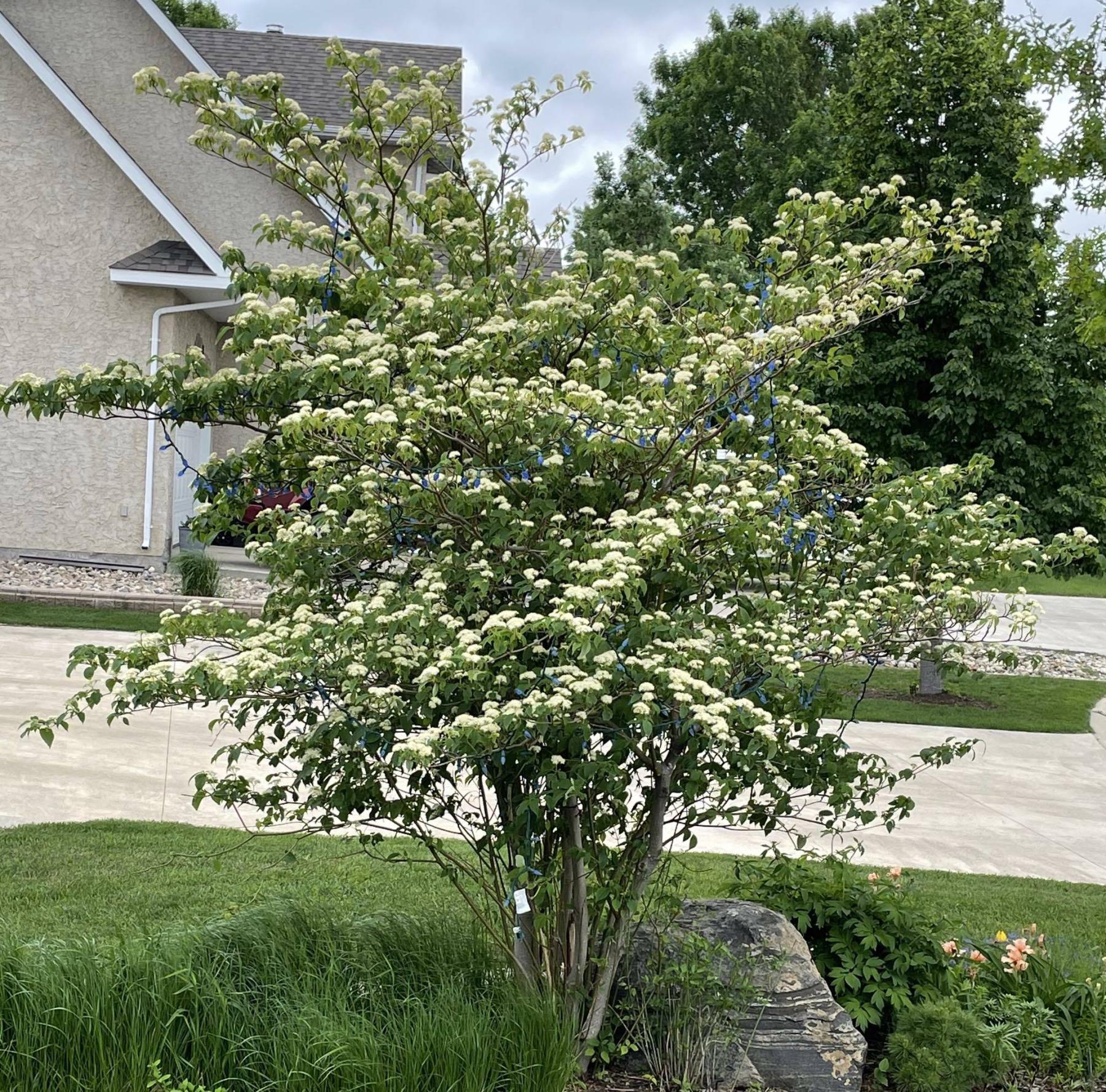
GREG BOGUSKI
A native species, Pagoda dogwood blooms every spring in this Brandon garden.
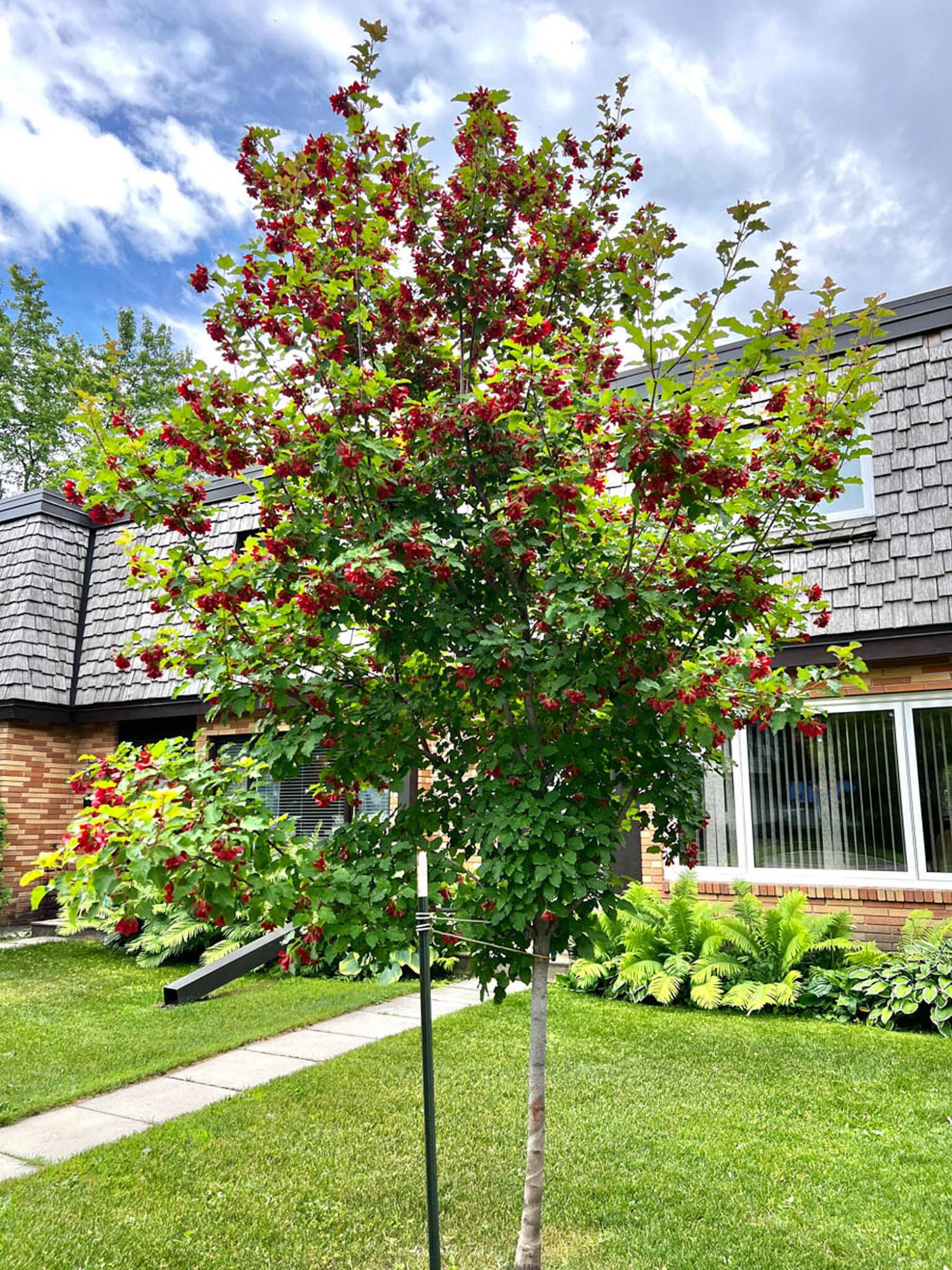
CARLA ANTONATION
Hot Wings Tatarian Maple is adaptable to southern Manitoba’s alkaline soils.
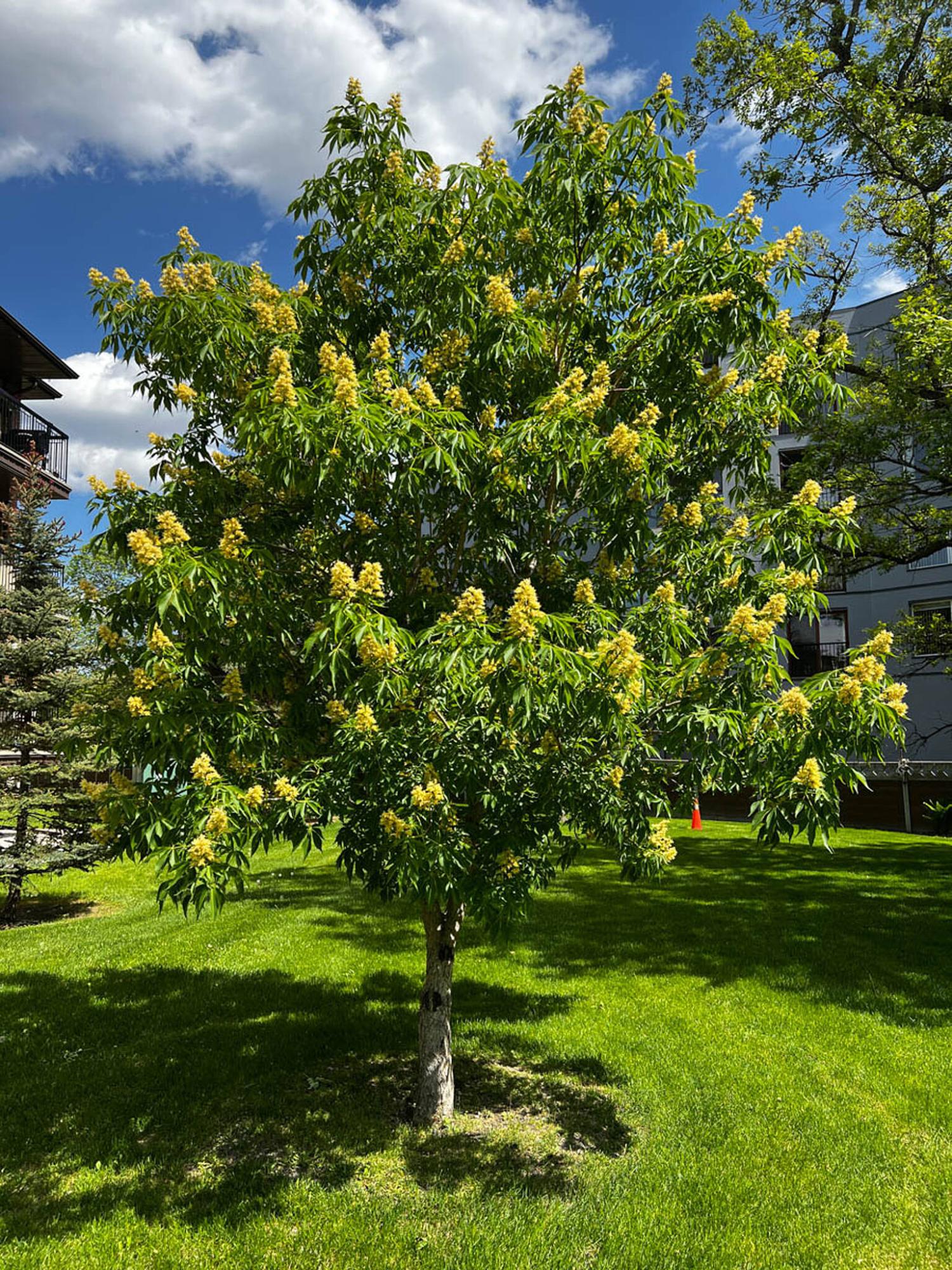
CARLA ANTONATION
Consider the mature size of your tree. Ohio buckeye is a big round canopy tree with bright green leaves.
Selecting a tree for your landscape is an important decision. In today’s column, Carla Antonation, an arborist certified by the International Society of Arboriculture and co-owner of Trilogy Tree Services, shares her advice and recommendations.
“To start with, when selecting a tree and deciding what to plant, it is important to pay attention to the microclimate of your yard,” says Antonation. “Every yard is a little different in terms of sun and wind exposure. Assess light availability because most trees require a full sun location. Wind can affect hot and cold temperatures and make both of those elements more extreme.”
Existing soil conditions are not easily changed, says Antonation, although applications of compost can improve soil. But compost needs to be added to soil annually if soil improvement is to be achieved on a long-term basis, she says. “Mulching with shredded leaves and arborist wood chips does so much for soil biodiversity and speeds up the processes of creating healthy soil by increasing soil microbial activity.”
It’s important to be mindful of soil volume, says Antonation. For example, if you are thinking of planting a tree between a patio and a deck or between two neighbouring driveways, consider the amount of surface area that your tree’s roots will have access to. “A tree can only grow to the size of its root zone,” says Antonation. “Roots need oxygen so you need more open surface area for that oxygen exchange to happen in the soil.”
Before choosing your tree, consider its mature size not only in terms of the size of its mature canopy but also the mature width of the trunk. This will assist in determining if you have enough space to plant a tree near a fence or other structure. “Another consideration is the ease in getting water to your tree,” says Antonation. “Newly planted trees need more water for the first couple of years.”
Let’s move on now to the tree nursery and garden centre with a specific focus on containerized trees.
“One of the most important things when selecting your tree is to look at the area where the trunk transitions to root,” says Antonation. The all-important root flare is where the first main roots attach to the trunk. Finding the root flare is confusing for many people. “It’s confusing because in a lot of containerized trees, there will be adventitious roots,” says Antonation. “These are roots that grow out of the trunk when there has been soil against the trunk, so they are above the natural root flare. I always pull the soil away from the trunk in the pot at the nursery to see what’s there. Sometimes the root flare is just below the soil surface and that’s great but sometimes you also find adventitious roots or circling roots. You want to avoid selecting that tree.”
Is it possible to see circling roots by examining the bottom of the tree container? “Not really,” says Antonation. “I recommend pulling soil away from the surface. You can also slide the tree out of the pot – often they slide out easily and go back in easily. But also, if I have to go down more than three inches to find some roots, then I’m not buying that tree.”
Antonation is less concerned about what the top of a 10 or 15-gallon containerized tree looks like because the tree will eventually outgrow everything you see at the nursery. “But I do pay attention to any signs of trunk wounds because wounds in the trunk will be with the tree forever.”
What are some of the best types of trees to plant? As someone who is well seasoned in residential tree work, Antonation has planted and cared for a diversity of hardy trees. Here are a few of her favourites.
Ming Cherry (Prunus maackii) is a very good choice for an ornamental tree, says Antonation. Suitable for small spaces, it grows 7.62 metres tall and only 4.57 metres wide. Ming Cherry has gorgeous peeling reddish-bronze bark. It produces white flowers in spring.
“Hot Wings Tatarian Maple is Trilogy Tree Services’ go-to maple,” says Antonation. “Tatarian maples do so much better in our alkaline soils than other maple species such as Acer ginnala.”
Antonation likes Ivory Pillar Japanese tree lilac (Syringa reticulata) for its columnar form, fragrant white blooms, and grey bark. “I am also excited about the Nannyberry tree form,” she says. “In a tiny yard, it is a good option.” A native plant, Nannyberry (Viburnum lentago) has showy white flowers in May and dark blue berries and burgundy leaf colour in fall. Pollinators love it, too. The Nannyberry tree form is suitable for sunny or partly shaded locations.
Pagoda dogwood (Cornus alternifolia) is another option for a partly shaded location. “I love planting Pagoda dogwood, but it is not easy to find,” says Antonation. A small deciduous tree that is native to Eastern North America from Newfoundland to southern Manitoba, Pagoda dogwood has a unique horizontal branching pattern. Creamy white, flat-topped flowers bloom in spring.
For larger shade trees, Antonation likes to plant Hackberry (Celtis occidentalis), a native species which grows to a height of about 15 metres. “It is an interesting tree with corky bark and is a good substitute for elm.” The Ohio buckeye (Aesculus glabra) is a big round canopy tree, says Antonation. It has showy bright green compound leaves with five to seven leaflets.
What should you keep in mind when planting your tree? “My number one tip when planting a tree is to plant it at the right depth,” says Antonation. “Planting depth is determined by the tree’s roots and not by how much soil is in the container. Take the root ball out of the container, pull any excess soil from the top of the root ball, measure the depth of the root ball, and then dig your hole. Take care to not dig too deep. Ensure that the root flare is at the surface level or possibly higher.”
The soil at the bottom of the hole should be left undisturbed. Once the root ball has been set into the planting hole, backfill around the root ball with the same soil that was dug out of the hole. “We want water to infiltrate and move throughout the soil equally. If there is different textured soil from the planting hole to the native soil, water is not going to infiltrate equally,” says Antonation.
Next, apply a 7.62 cm layer of mulch around the tree but not up against the trunk. Water your tree at planting time and maintain a regular watering schedule. “It is important to realize that our clay soil holds moisture, especially if there is a mulch layer,” says Antonation. “Watering once a week might be enough. If you are unsure, just dig down through the mulch layer and feel the soil.”
colleenizacharias@gmail.com
For advice, ideas and tips to keep your outdoor and indoor plants growing, sign up to receive Winnipeg Gardener, a free monthly digital newsletter I write for the Winnipeg Free Press.

